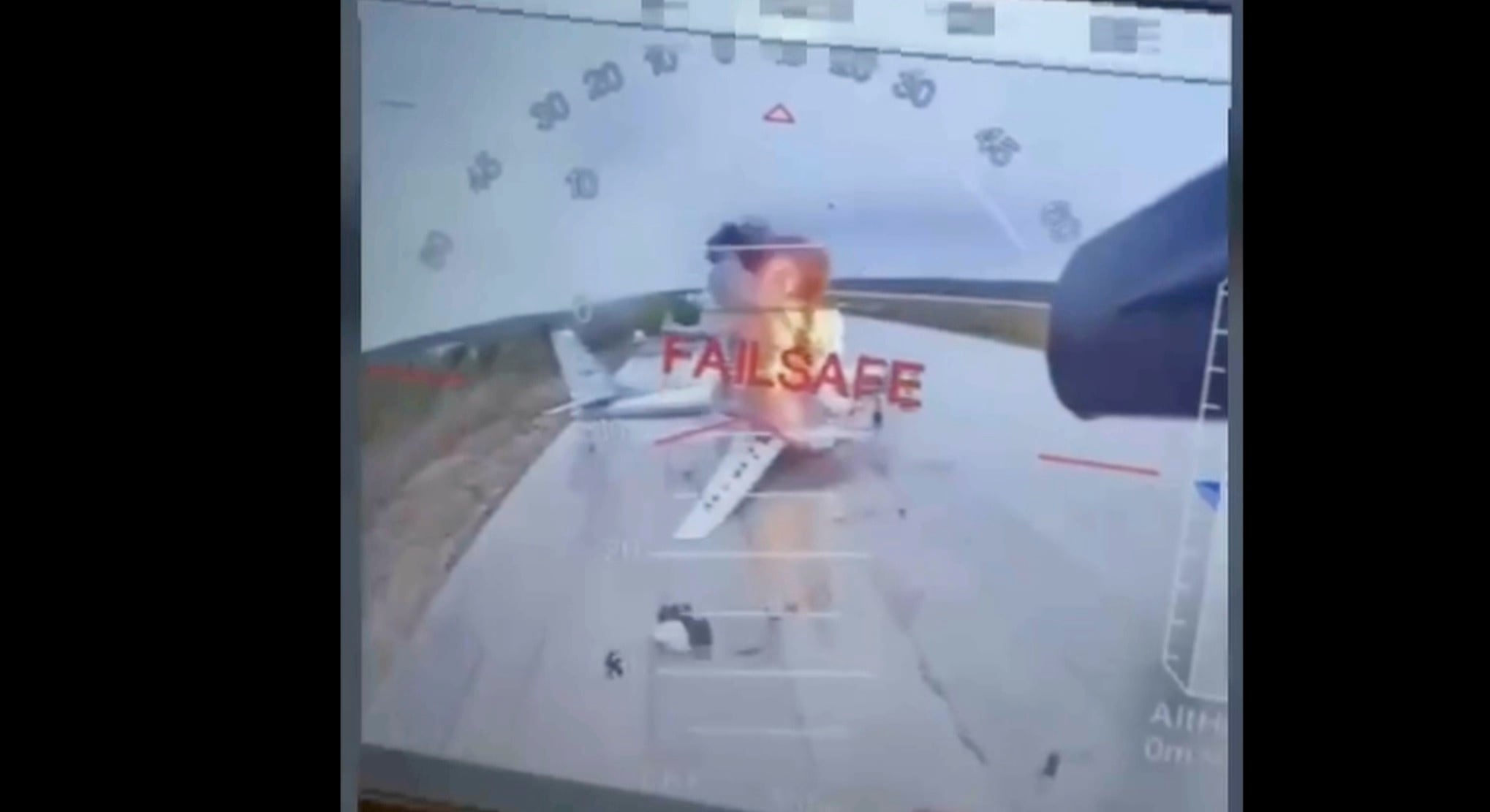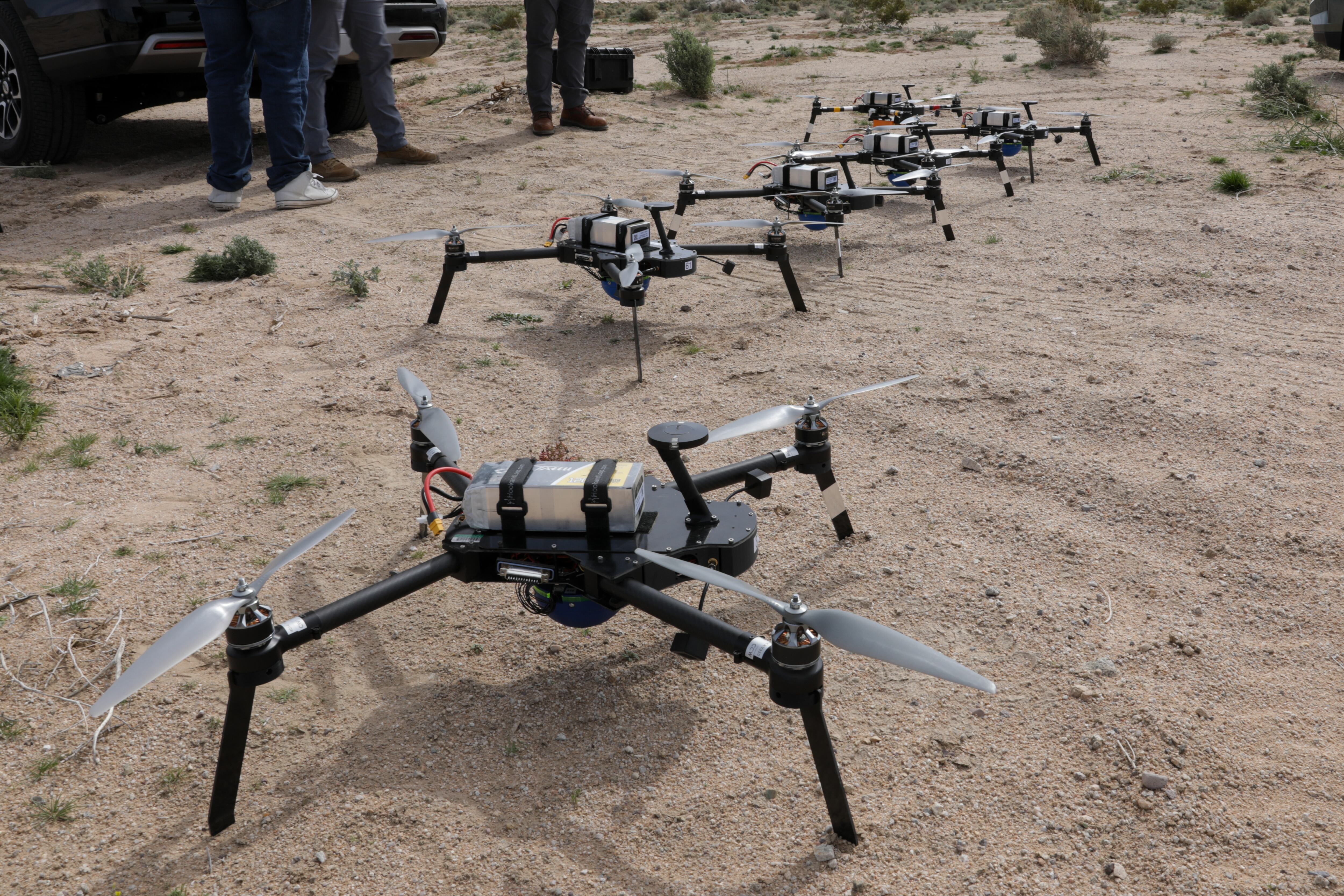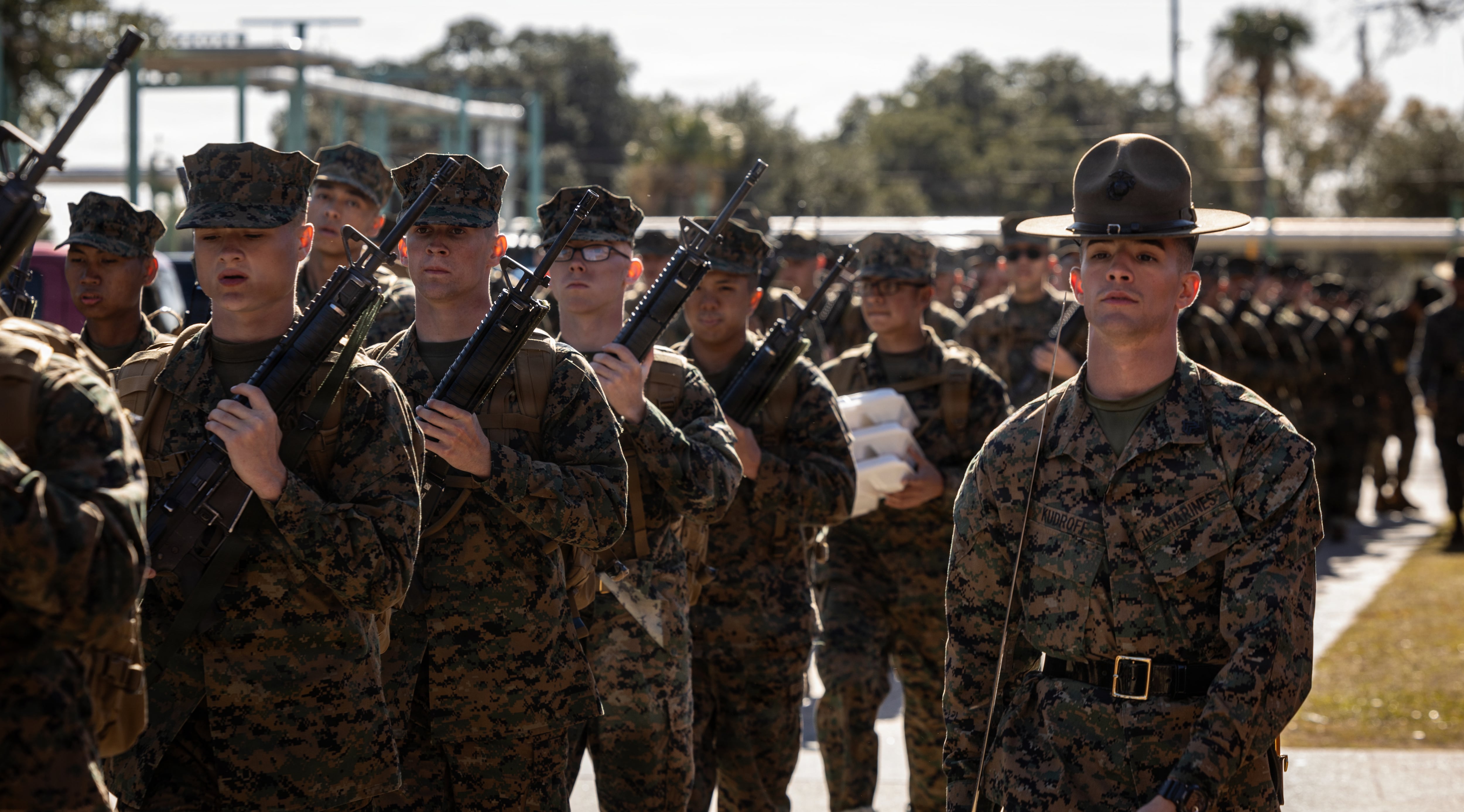In March 2025, the U.S. government conducted a wargame on how to defend military bases in the United States from drone attacks.
Just three months later, what had seemed a theoretical possibility became frighteningly close to reality. In June 2025 came Ukraine’s Operation Spiderweb. Ukrainian agents had spent months smuggling hundreds of drones deep inside Russia. In a coordinated strike, more than 100 small drones destroyed 20 to 40 Russian warplanes on five airbases scattered from Moscow to Siberia.
The damage extended to more than Russian airpower or the Kremlin’s pride. The drone’s-eye videos of burning bombers sent a chilling signal to nations around the world. If this could happen to Russia, then it could happen to any country — including the United States.
RELATED

Since 2022, the U.S. Army’s Joint Counter-Small Unmanned Aircraft Systems Office, or JCO, and the RAND Corp. think tank have held six wargames on how to mitigate the drone threat.
“We are trying to understand the policies and authorities we have in place to prevent us from contending with a scenario like Operation Spiderweb,” said Paul Lushenko, an assistant professor at the U.S. Army War College who helped run the drone wargame.
Many of the details of these wargames are classified, but one key finding is that protecting domestic U.S. bases can’t be just the military’s job.
“The tabletop exercise emphasized the need for a framework to integrate, enable, and synchronize state, local, tribal, and territorial authorities into counter-drone operations at or near military bases,” noted an essay by the game’s designers. But this, in turn, raises a slew of jurisdictional and communication issues.

By itself, Operation Spiderweb would have been an unpleasant reminder that the advent of small, easily transportable drones means that even installations thousands of miles from the battlefield aren’t safe. This is especially true for the U.S., which has been protected for centuries by two oceans and the absence of any significant adversary on its borders. Until recently, military bases had more to fear from terrorists or a crazed gunman crashing the gate, rather than a gaggle of small attack drones executing a miniature airstrike.
But, in fact, there have also been omens for years that drones were becoming a threat to U.S. installations. In 2016, the use of small weaponized drones by the Islamic State in Iraq made some American commanders uneasy. Then, in 2023, came a wave of mysterious drones that overflew Langley Air Force Base, causing no damage but generating much buzz about potentially hostile unmanned aerial vehicles in U.S. airspace. The U.S. government estimates that there were 350 drone incursions over military installations in 2024. While most came from careless or curious drone enthusiasts, the potential for hostile reconnaissance or attack is there.
Initially, the JCO/RAND wargames focused on the technical challenges of counter-drone defense. But the March 2025 exercise tackled a much more complex question: Who exactly has the responsibility — and the authority — for defending bases from drones?
“Let’s say you’ve got a drone flying down the Potomac,” said Christopher Pernin, a RAND researcher who helped run the drone wargames. “Maybe the FAA has signed off that the drone is approved to fly. Well, how can the people at the Pentagon know? They have to interrogate the system and look it up. Well, guess what? You’ve got 67 seconds to figure this out.”
In particular, the March wargame explored the conditions under which U.S. Northern Command — which is already responsible for securing North American airspace — would coordinate counter-drone defense of military bases. The exercise also explored how the joint military services and government agencies can maximize data sharing and situational awareness, as well as how to foster the use of counter-drone technologies such as jamming GPS signals.
Using Fort Bliss, Texas, and Joint Base Pearl Harbor, Hawaii, as the targets, the tabletop game included scenarios where the defender faced attacks by drones launched at various altitudes, bearings and distances. This served as a backdrop to stimulate discussions by over 100 participants from more than 30 federal and state agencies in what Lushenko described as “the largest interagency tabletop exercise in five years.”
The wargame identified three conditions under which NORTHCOM could support anti-drone defense of homeland bases.
“These include drone incursions that overwhelm the organic defensive capabilities of the services; are simultaneously conducted at different military bases, especially those performing essential missions; and, undermine public trust in the military and government,” the RAND essay said.
The exercise also endorsed the idea of NORTHCOM’s “flyaway kits,” which consist of mobile counter-drone systems and trained personnel that can be deployed via commercial aircraft as needed. However, these kits can do more than supplement what ideally would be a multilayered defense at military installations, including jamming, microwave and laser weapons and kinetic weapons such as machine guns.
Interestingly, the wargames suggested that the National Guard could play a crucial role in defending homeland military installations. Especially valuable would be the National Guard’s Civil Support Teams, which are available 24/7, can be deployed with 90 minutes and “have large budgets that can offset the equipping and training costs for counter-drone operations,” the RAND essay noted.
“There are some imaginative things we can do to further optimize our state-based military, through the National Guard, to respond to these drone incursions,” Lushenko added.
The defense of military bases is as much a matter of law as it is a matter of technology. For example, per Section 130i under Title 10 of the U.S. Code, the commanders of some bases are authorized to use force against drone intrusions, while others could face prosecution.
Compounding the problem is that with around 500 military installations around the U.S, there are a hodgepodge of different rules of engagement. At some sites, the instructions from commanders are “‘no drones on my installation, you have carte blanche to do whatever you need,’” said Pernin.
“They know exactly what they’re doing and they know what their goals are. I suspect there are a lot of places that don’t have that kind of goal setting. They see a UAV flying on the other side of the installation, and they think, ‘I’m not sure if I should take it out or just let it go.’”
Ultimately, the drone wargames were valuable simply by bringing together people from different agencies.
“We had a lot of crosstalk that I don’t think had happened before,” Pernin recalled. “We had a lot of occasions where people said, ‘I think this is so-and-so’s role.’ But that person was in the room, and they would say, ‘no, it’s not ours.’”





